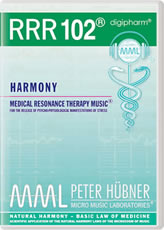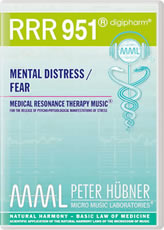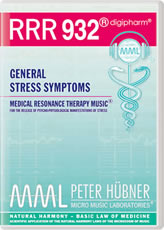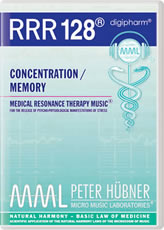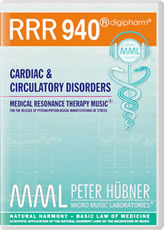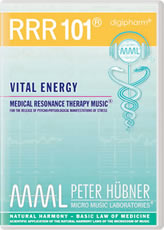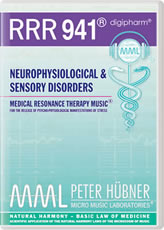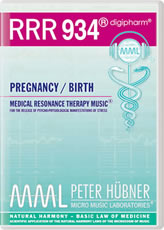|
Scientific Music Medicine |
| Home • Site Map • Research • Reports • Intern. Experts • Music Preparations • Fundamentals • Store • Contact |

Peter Hübner – Music as a Harmonic Medical Data Carrier
Question: But if I have understood you correctly, the principle of polyphony is already present in the microcosm of music.
Peter Hübner: That’ s right. As has already been said, it is precisely this artistic craft of polyphony which we find on closer examination of the microcosm of music and which leads us to cognition of the laws of harmony of the microcosm of music – and which then in turn provokes the compositional natural concept of polyphony, of the counterpoint and of the art of the fugue.
In as much, one can say that the microcosm of music conceals within the principles of the highest compositional art of classical music and, on closer examination, also clearly displays this creative sphere.
Here one recognises that, with Bach too, this artistic craft did not reach its end – not least because of the missing technical possibilities in music at that time. Nowadays Bach would have a far greater instrumental range available to him for his polyphonic art.
Question: Then homophony is simply not present in the microcosm of music?
Peter Hübner: No. Homophony can be explained with just a superficial look into the microcosm of music – from that limited view where one thinks that the microcosm of music consists of one base tone with its overtones oscillating in the relationship of whole numbers. But this kind of view is as weak and sketchy, as recognising a person from his shadow – it gives us certain clues but does not, however, tell us very much about him.
Closer observation of the microcosm of music opens up entirely different views and leads to completely new insights and understanding.
Question: But with his use of the monochord, did Pythagoras not point towards homophony?
Peter Hübner: Today there are very many pseudo-musicologists or musical lay people who believe that Pythagoras’s insight was restricted to finding out with his so-called monochord, the overtones mentioned and their distance apart, i.e. their intervals or oscillation relationships. But the insight of this brilliant scholar of our early European history was far greater reaching.
Pythagoras only used this simple experimental arrangement in order to make it clear to non-scientifically trained people that there were fixed mathematical relationships between the external and internal hearing and the microcosm of music and that, therefore, not only external nature, but also man’s internal nature – his mind, his feelings and his soul – could be mathematically determined.
For him the monochord was just the simplest experimental arrangement for making this natural connection between man’s external and the internal world compellingly clear, but in no way did it serve any other purpose – neither intellectually, musicologically, nor therapeutically.
For this purpose it is too primitive in structure. The only therapeutic purpose that he pursued with this instrument lay in forging a bridge for an artistic scholar to the natural sciences or respectively a bridge to the artistic sciences for a scholar of natural science.
Peter Hübner: That’ s right. As has already been said, it is precisely this artistic craft of polyphony which we find on closer examination of the microcosm of music and which leads us to cognition of the laws of harmony of the microcosm of music – and which then in turn provokes the compositional natural concept of polyphony, of the counterpoint and of the art of the fugue.
In as much, one can say that the microcosm of music conceals within the principles of the highest compositional art of classical music and, on closer examination, also clearly displays this creative sphere.
Here one recognises that, with Bach too, this artistic craft did not reach its end – not least because of the missing technical possibilities in music at that time. Nowadays Bach would have a far greater instrumental range available to him for his polyphonic art.
Question: Then homophony is simply not present in the microcosm of music?
Peter Hübner: No. Homophony can be explained with just a superficial look into the microcosm of music – from that limited view where one thinks that the microcosm of music consists of one base tone with its overtones oscillating in the relationship of whole numbers. But this kind of view is as weak and sketchy, as recognising a person from his shadow – it gives us certain clues but does not, however, tell us very much about him.
Closer observation of the microcosm of music opens up entirely different views and leads to completely new insights and understanding.
Question: But with his use of the monochord, did Pythagoras not point towards homophony?
Peter Hübner: Today there are very many pseudo-musicologists or musical lay people who believe that Pythagoras’s insight was restricted to finding out with his so-called monochord, the overtones mentioned and their distance apart, i.e. their intervals or oscillation relationships. But the insight of this brilliant scholar of our early European history was far greater reaching.
Pythagoras only used this simple experimental arrangement in order to make it clear to non-scientifically trained people that there were fixed mathematical relationships between the external and internal hearing and the microcosm of music and that, therefore, not only external nature, but also man’s internal nature – his mind, his feelings and his soul – could be mathematically determined.
For him the monochord was just the simplest experimental arrangement for making this natural connection between man’s external and the internal world compellingly clear, but in no way did it serve any other purpose – neither intellectually, musicologically, nor therapeutically.
For this purpose it is too primitive in structure. The only therapeutic purpose that he pursued with this instrument lay in forging a bridge for an artistic scholar to the natural sciences or respectively a bridge to the artistic sciences for a scholar of natural science.
Music Therapy on the
Basis of Disharmony
Basis of Disharmony
“It would be absolutely wrong if one now wished to go and try to create order from the data on these attributes
of disharmony, i.e. on the basis of disharmonically ordered electrical or biochemical data – no matter how
one went about it.
In the case of music medicine this means accordingly: that one must look to natural orders in order to produce the natural harmony of biological systems, and never to forms of disorder.
The measuring of brain, heart or other flows of a person whose biological order is disrupted may be of value for medical analysis. If, however, this data is applied to a form of therapy, then it can only have a damaging effect – never one that is medically beneficial. Such a course of action runs downright contrary to natural evolution”
In the case of music medicine this means accordingly: that one must look to natural orders in order to produce the natural harmony of biological systems, and never to forms of disorder.
The measuring of brain, heart or other flows of a person whose biological order is disrupted may be of value for medical analysis. If, however, this data is applied to a form of therapy, then it can only have a damaging effect – never one that is medically beneficial. Such a course of action runs downright contrary to natural evolution”
Peter Hübner
Question:
What did Pythagoras teach his students?
Peter Hübner: The structure of his teaching plan reveals that, with an insight into the microcosm of music, he let his pupils run through different phasic leaps in knowledge – in the same way that we experience this today when we examine the microcosm of music.
We know such phasic leaps in knowledge in almost all the sciences, in physics for example, the one from mechanics to atom physics.
Pythagoras worked on the premise that the functions of our organism run in a complex fashion according to the same laws of harmony as those found in the microcosm of music.
Studies carried out in the field of chronomedicine confirm this thesis of his ever more extensively – particularly in respect of the rhythmic processes.
Disruption of the natural harmonic order of our bodily functions is accepted in modern medicine as the cause of illness. These present–day scientific findings correspond with the views of medics from all the well–known high civilisations – whereby, even in former times, the aspects of harmony and of the balance of energies were regarded more favourably.
Any harmonic medical therapy traditionally aims to support the natural complex order of the organism and those biological energies working within it, and to ward off disharmony in the biological processes.
If the natural balance of energy in an organism is disrupted, the harmonic relationships of all functions go off balance – the disruption of just one single element is capable of effecting the disruption of all other elements in this holistic biological integrated system.
If, however, the natural harmony of the functions of our organism are disrupted, then we become susceptible to illness and subsequently do indeed become ill.
And all the electrical, magnetic, chemical or biochemical signals a body gives to indicate that its natural biological harmony is off balance display attributes of disharmony.
What did Pythagoras teach his students?
Peter Hübner: The structure of his teaching plan reveals that, with an insight into the microcosm of music, he let his pupils run through different phasic leaps in knowledge – in the same way that we experience this today when we examine the microcosm of music.
We know such phasic leaps in knowledge in almost all the sciences, in physics for example, the one from mechanics to atom physics.
Pythagoras worked on the premise that the functions of our organism run in a complex fashion according to the same laws of harmony as those found in the microcosm of music.
Studies carried out in the field of chronomedicine confirm this thesis of his ever more extensively – particularly in respect of the rhythmic processes.
Disruption of the natural harmonic order of our bodily functions is accepted in modern medicine as the cause of illness. These present–day scientific findings correspond with the views of medics from all the well–known high civilisations – whereby, even in former times, the aspects of harmony and of the balance of energies were regarded more favourably.
Any harmonic medical therapy traditionally aims to support the natural complex order of the organism and those biological energies working within it, and to ward off disharmony in the biological processes.
If the natural balance of energy in an organism is disrupted, the harmonic relationships of all functions go off balance – the disruption of just one single element is capable of effecting the disruption of all other elements in this holistic biological integrated system.
If, however, the natural harmony of the functions of our organism are disrupted, then we become susceptible to illness and subsequently do indeed become ill.
And all the electrical, magnetic, chemical or biochemical signals a body gives to indicate that its natural biological harmony is off balance display attributes of disharmony.
Music Therapy
on the Basis of
Commercial
Music Recordings
on the Basis of
Commercial
Music Recordings
“If the cited customary music recordings are used for music medicine, the process of natural evolution is
turned upside down.
Such a course of action is certainly the simplest, but also the least intelligent way of performing music medicine, since it requires of the therapist neither musicological nor medical training.”
Such a course of action is certainly the simplest, but also the least intelligent way of performing music medicine, since it requires of the therapist neither musicological nor medical training.”
Peter Hübner
Question: And you can take this data into consideration in the music?
Peter Hübner: It would be absolutely wrong if one now wished to go and try to create order from the data on the attributes of disharmony, i.e. on the basis of disharmonically ordered electrical or biochemical data – no matter how one went about it.
This is just as if one wished to try and build a new car out of damaged parts from various scrap yards.
There are indeed individuals who do attempt this, but their numbers are few and their success still smaller – in the ‘motor industry’ and in ‘music medicine’ alike.
In the motor industry it is at least usual to build new car components and new cars according to fixed construction plans and design patterns with the help of various materials.
And biological evolution also prefers the path of growth to that of rejuvenation. As a rule, at least, old people do not become young, but young people become old.
In the case of music medicine this means accordingly: that one must look to natural orders in order to produce the natural harmony of biological systems, and never to forms of disorder.
The measuring of brain, heart or other flows of a person whose biological order is disrupted may be of value for medical analysis. If, however, this data is applied to a form of therapy, then it can only have a damaging effect – never one that is medically beneficial. Such a course of action runs downright contrary to natural evolution.
Peter Hübner: It would be absolutely wrong if one now wished to go and try to create order from the data on the attributes of disharmony, i.e. on the basis of disharmonically ordered electrical or biochemical data – no matter how one went about it.
This is just as if one wished to try and build a new car out of damaged parts from various scrap yards.
There are indeed individuals who do attempt this, but their numbers are few and their success still smaller – in the ‘motor industry’ and in ‘music medicine’ alike.
In the motor industry it is at least usual to build new car components and new cars according to fixed construction plans and design patterns with the help of various materials.
And biological evolution also prefers the path of growth to that of rejuvenation. As a rule, at least, old people do not become young, but young people become old.
In the case of music medicine this means accordingly: that one must look to natural orders in order to produce the natural harmony of biological systems, and never to forms of disorder.
The measuring of brain, heart or other flows of a person whose biological order is disrupted may be of value for medical analysis. If, however, this data is applied to a form of therapy, then it can only have a damaging effect – never one that is medically beneficial. Such a course of action runs downright contrary to natural evolution.
| MEDICAL RESONANCE THERAPY MUSIC® Medical Music Preparations on CD |
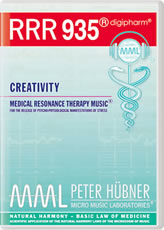 Creativity
|
If you like to look at the |
With kind permission of AAR EDITION INTERNATIONAL
© 1998- SCIENTIFIC MUSIC MEDICINE | Contact
Subject to change in the interests of scientific advancement.
© 1998- SCIENTIFIC MUSIC MEDICINE | Contact
Subject to change in the interests of scientific advancement.
